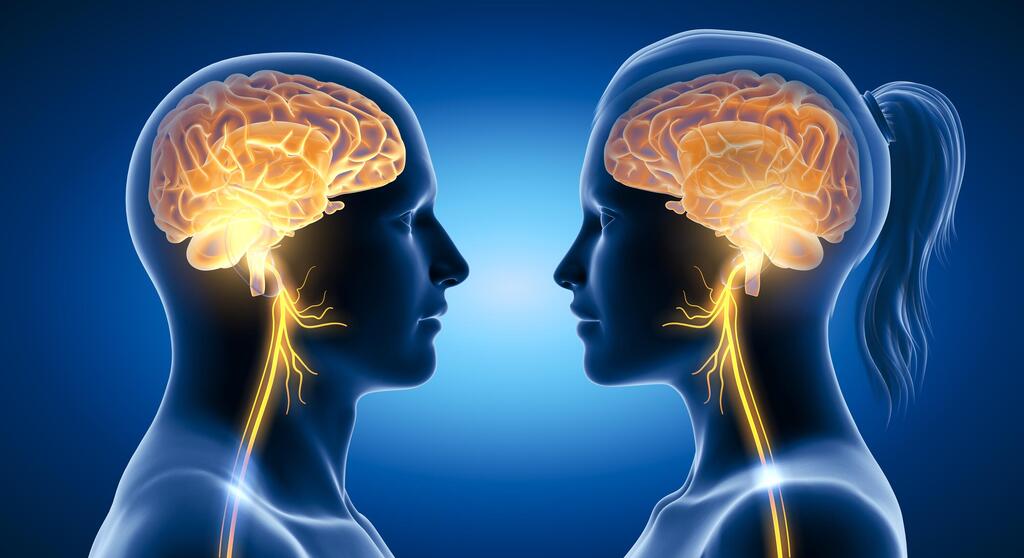Getting your Trinity Audio player ready...
Behold the wonder of vagus nerve stimulation - a seemingly miraculous solution to our stress and anxiety. With just a few simple movements, we can hit the "restart" button on our nervous system and find relief from the pressures of modern life.
Other stories:
In these tumultuous times, there is no better moment to practice systemic regulation and experience immediate calm.
From deep breathing to splashing our faces with cold water, massaging the neck and ears, and even gently stroking the diaphragm - all of these techniques are showcased on popular social media platforms like TikTok and Instagram, beckoning us to explore the incredible benefits of vagus nerve activation.
The vagus nerve, named after its wandering path throughout the body, is the longest among the twelve cranial nerves that span from the brain to various parts of the body. It extends to a vast network of organs within the chest and abdomen, expertly regulating crucial functions such as hormones, digestion, heart rate, and immune response.
Remarkably, a staggering 80% of the time, the vagus nerve transmits vital information from these systems to the brain, according to Prof. Yoram (Yuri) Gidron from Haifa University.
There is a universal agreement among practitioners of both Western and holistic medicine - the vagus nerve attains its peak performance when we engage in prolonged, intentional breathing exercises.
Prof. Gidron aptly illustrates this by suggesting that we "smell a flower and blow out a candle". The practice commonly known as "vagal breathing," familiar to yoga enthusiasts, involves taking deep, deliberate breaths in three separate two-minute sessions each day.
The crucial element lies in the pace of breathing, as slow, measured inhalation and exhalation work together to restore the body's regulatory balance.
According to Prof. Gidron, there are various methods and practices that can effectively enhance the activity of the vagus nerve, also known as "vagal tone". For instance, switching to a Mediterranean diet which features olive oil, vegetables, fresh fruits, and fish can be highly beneficial.
Additionally, Artzi Padan recommends a simple technique for vagal stimulation - diaphragmatic massage while lying down or sitting up. As the vagus nerve passes through the center of the diaphragm and divides, massaging the area can relieve tension and allow for better diaphragmatic movement.
The Heart Rate Variability (HRV) - a metric that gauges the vagus nerve activity - represents a vital indicator of our overall health, as elucidated by Prof. Gidron.
Essentially, it measures the space between our pulses and reflects our heart rhythm. The higher the value, the better our well-being.
Moreover, research has demonstrated that this index holds predictive value in terms of survival rates for an array of diseases, including the COVID-19 virus. While it is typically measured using a pulse or an EKG, the HRV specifically examines the interval between our heartbeats, rather than the pulse itself.
Nearly a century ago, in 1921, Otto Levi - a renowned German physiologist - made a remarkable discovery regarding the vagus nerve. He uncovered a substance that the nerve secreted, which he fittingly dubbed "vagal substance".
Later, scientists identified this substance as acetylcholine, marking it as the first-ever neurotransmitter to be discovered. In honor of this groundbreaking revelation, Levi shared the Nobel Prize with his colleague, Sir Henry Dale.
Furthermore, the vagus nerve is responsible for the production of oxytocin - a hormone that is even more widely recognized than its counterpart. Oxytocin, also known as "the love hormone", is famously released during orgasm.
According to Christopher Bergland - a renowned author of several articles on the vagus nerve in Psychology Today - there is a potential evolutionary explanation for why our body needs both the sympathetic and parasympathetic systems.
He postulates that our ancestors likely relied on the sympathetic system to raise cortisol levels, which was crucial for hunting, gathering, and defending against enemies.
Conversely, the parasympathetic system was responsible for producing oxytocin - a hormone that fosters social bonding, reproduction, and the creation of an environment conducive to our survival, including close-knit communities and romantic relationships.
He believes that a predicament arises when our archaic evolutionary mechanisms confront the ceaseless frenzy of the 21st century, resulting in a sort of short circuit in our biological system.
One of the obstacles hindering the smooth operation of the vagus nerve is the advent of social networks. On these platforms, we are inundated with images of jubilant individuals on Instagram that sow seeds of doubt about our own happiness, encourage us to make unfavorable comparisons, and ultimately, foster a sense of isolation.
The vagus nerve is not just a tool for bodily regulation, but also for sexual pleasure, especially in women. According to Artzi Padan, the nerve is a crucial component of female sexuality because it creates a sense of safety and security with one's partner.
"Female sexuality thrives on feelings of safety and regulation," she explains. "Being able to release stress and feel protected stimulates sexual desire." In fact, the nerve's branches extend beyond the digestive system and into the cervix, so proper muscle activation can enhance sexual function.
Dealing with stressful events
Prof. Gidron believes an effective treatment for increasing vagal tone is biofeedback, a technique that involves monitoring physiological information from the body. A small device attached to the finger displays the HRV on a screen, allowing individuals to track their progress.
Additionally, activating the frontal cortex, located in the front of the brain, can help manage anxiety disorders and post-traumatic stress. Cognitive methods such as reframing can also be beneficial, allowing individuals to view their experiences in a neutral or positive light instead of a negative one.
Research indicates that narrative writing may have a positive impact on the vagal tone. According to a 2017 study by Kyle Bourassa at the University of Arizona, individuals who had undergone a divorce, a distressing event for many, were able to elevate their HRV through expressive writing.
The process involves jotting down one's deepest thoughts and emotions about a traumatic experience to process and derive significance from the suffering.
The outcomes suggest that the ability to construct a coherent narrative not only aids in re-experiencing emotions but also assigns significance to them, allowing people to process their emotions in a more beneficial manner, which can lead to an improvement in their cardiac activity.
Prof. Gidron highlights the significance of the HRV index in predicting survival rates in the general population. Studies indicate that individuals with high vagal activity have a better chance of surviving longer.
In the case of COVID-19, the index predicts double the survival rate, and for cancer recovery, it predicts two to five times higher survival rates. Moreover, it predicts four times the likelihood of surviving a heart attack.
However, despite its importance, there is a lack of awareness regarding this index, and it is not measured in emergency rooms or intensive care units, which can be attributed to ignorance.
How would the emergency room use your HRV index?
"Individuals with mental illnesses and chronic diseases are often found to have a low HRV, which is associated with a higher risk of mortality.
"Therefore, it is important to consider methods of activating the vagus nerve or adjusting their treatment plans. The vagus nerve serves as a critical link between the brain and the body."




